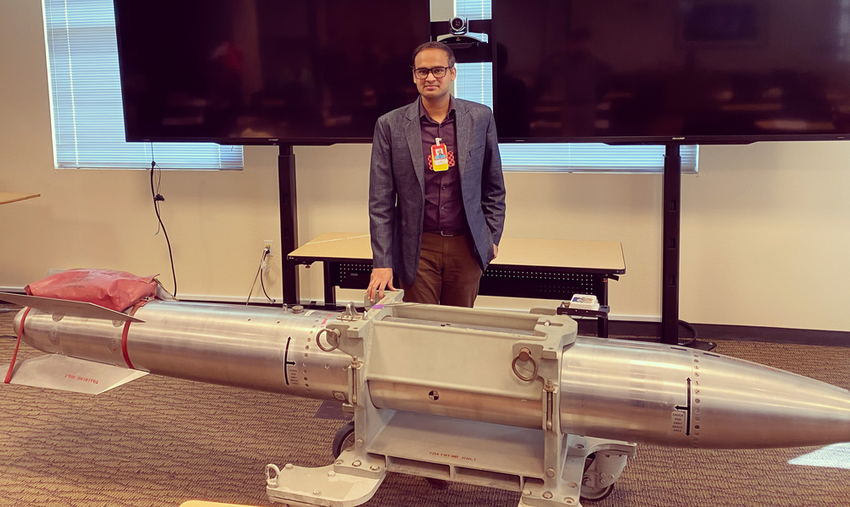Indian American researcher identifies five strategies to stop the bomb

Photo courtesy of Kunal Singh
Kunal Singh hopes these strategies challenge a “binary trap” that most academics in nuclear security fall into
By Arun Kumar
Kunal Singh, an Indian American political science PhD student at the Massachusetts Institute of Technology (MIT), has identified a suite of five strategies states use to prevent other nations from developing nuclear weapons.
In his dissertation, “Nipping the Atom in the Bud: Strategies of Counterproliferation and How States Choose Among Them,” Singh hopes to move beyond a classic, academic debate: that nuclear weapons are either very destabilizing, or very stabilizing.
Singh hopes that the five nuclear strategies he’s identified challenge a “binary trap” that most academics in nuclear security fall into. “They think of counterproliferation either as military attack or no military attack, economic sanctions or no sanctions, and so they miss out on the spectrum of behaviors, and how fluid they can be.”
“The question behind my doctoral research is simple,” says Singh, according to an MIT release. “When one country learns that another country is trying to make a nuclear weapon, what options does it have to stop the other country from achieving that goal?”
From the Middle East to India and Pakistan, and from the Korean peninsula to Taiwan, Singh has been developing a typology of counterproliferation strategies based on historical cases and to some degree on emergent events. His aim is to clarify what states can do “to stop the bomb before it is made.
“Ultimately, I’d like my work to help decision-makers predict counterproliferation strategy, and draw lessons from it on how to shield their own citizens and economies from the impact of these strategies,” he says.
On Oct 7, 2023, when Israel came under attack, Singh was in Jerusalem investigating two singular episodes where military force was deployed to advance nonproliferation goals: Israel’s airstrikes against nuclear reactors in 1981 in Iraq, and in 2007 in Syria. To date, these have been the only major attacks on nuclear facilities outside of an active war.
Singh defines the military response by Israel as “kinetic reversion,” one of five types of counterproliferation strategies he has identified. Another is “military coercion,” where a state threatens the use of military force or uses moderate force to demonstrate its commitment to preventing the pursuit of the bomb.
States can also use diplomatic and economic leverage over the proliferant to persuade it to drop its nuclear program, what Singh calls “diplomatic inhibition.”
One form this strategy takes is when one country agrees to give up its program in return for the other doing the same. Another form involves “placing sanctions on a country and excluding them from the world economy, until the country rolls back its program — a strategy the US has employed against Iran, North Korea, Libya, and Pakistan,” says Singh.
India was rumored to have embraced military tactics. “I had always read about the claim that India was ready to attack the Pakistani uranium enrichment plant in Kahuta, and that planes were called off at the last minute,” Singh says. “But in interview after interview I found this was not the case, and I discovered that many written accounts of this episode had been completely blown up.”
In another strategy, “pooled prevention,” nations can band together to apply economic, diplomatic, and military pressure on a potential proliferator.
Singh notes that diplomatic inhibition, pooled prevention, and military coercion have succeeded, historically. “In 2003, Libya gave up its nuclear weapons program completely after the US and UK placed sanctions on it, and many states do not even start a nuclear weapons program because they anticipate an attack or a sanction.”
The final strategy Singh defines is “accommodation,” where one or more states decide not to take action against nuclear weapon development. The United States arrived at this strategy when China began its nuclear program — after first considering and rejecting military attacks.
Singh grew up in Varanasi, Uttar Pradesh. Frequent terrorist attacks throughout India, and some inside his city’s temples, made a deep impression on him during his childhood, he says.
A math and science talent, he attended the Indian Institute of Technology, majoring in metallurgical and materials engineering. After a brief stint with a management consulting firm, after college, he landed a job at a think tank, the Center for Policy Research in New Delhi.
He also worked as staff writer, first at Mint, a business newspaper, and then to the Hindustan Times, working on both papers’ editorial pages. In 2019, he headed to MIT and began a doctoral program focused on security studies and international relations.

